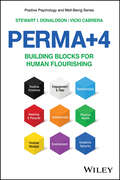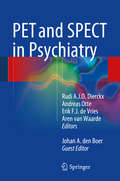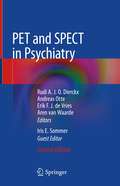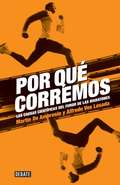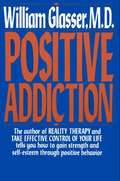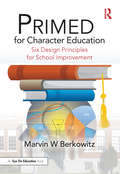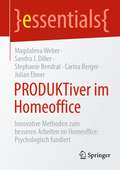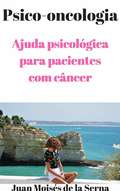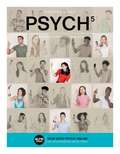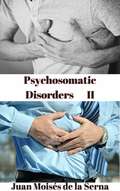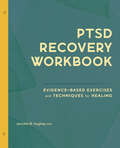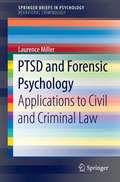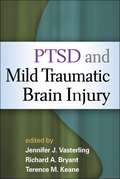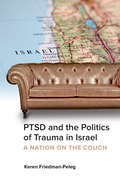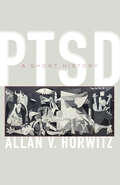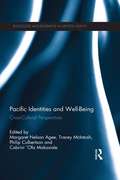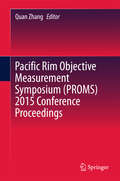- Table View
- List View
PDA in the Therapy Room: A Clinician's Guide to Working with Children with Pathological Demand Avoidance
by Raelene DundonPathological Demand Avoidance (PDA) presents a unique challenge for professionals, whereby conventional therapy methods are often perceived as demands and met with opposition where they normally would have proven effective. This guide sets out the most effective strategies for clinicians to provide the best care for children with PDA, adapting conventional modes of therapy to suit their needs. Methods include indirect techniques such as play-based therapy or trauma-informed approaches enabling the child to process their experiences on their own terms. With additional guidance for supporting the families of patients and addressing common obstacles, this book provides understanding and guidance for professionals making a difference to the lives of children with PDA.
PEERS® for Preschoolers: Friendship Skills for Autistic and Neurodivergent Children
by Elizabeth Laugeson Mina Park Jennifer SandersonThis manual builds on the success of the Program for the Education and Enrichment of Relational Skills (PEERS®), an internationally renowned program used in over 150 countries and translated into numerous languages. PEERS® has now expanded to work with autistic and neurodivergent preschool-aged children, as well as those with other social challenges. Through this new manual, providers will learn about important skills to enhance positive peer interactions and friendship development for young children, how to structure sessions and encourage skill-building effectively, and how to educate and empower parents to be valuable social coaches for their children. Every chapter includes a therapist guide for each session and parent resources such as lessons, homework, handouts, worksheets, and social coaching play cards. This latest edition to the PEERS® program is ideal for professionals and educators who provide social-emotional therapeutic services and support to young children (between the ages of four to six years) diagnosed with autism or other social challenges.
PEERS® for Young Adults: Social Skills Training for Adults with Autism Spectrum Disorder and Other Social Challenges
by Elizabeth A. LaugesonPEERS® for Young Adults presents the first evidence-based group treatment program for young adults with Autism Spectrum Disorder, as well as other neurodevelopmental disorders and social challenges. Inside, readers will find a critical step forward in the dissemination of effective behavioral interventions for young adults in the form of 16 engaging group session outlines that are both user-friendly and backed by empirical research. Each session is accompanied by homework assignments and practice suggestions designed to reinforce the group’s understanding of the skills learned during each meeting. This practical resource will prove to be an invaluable reference for any clinician or educator working with this population.
PERMA+4: Building Blocks for Human Flourishing (Positive Psychology and Well-Being)
by Stewart I. Donaldson Vicki CabreraProvides the tools and knowledge to develop and nurture the essential building blocks of a thriving life Understanding how to thrive, not just survive, has never been more critical in today's world. Grounded in over 25 years of peer-reviewed research, PERMA +4: Pathways to Well-Being and Positive Functioning provides a comprehensive guide to the essential building blocks of flourishing. Authors Stewart Donaldson and Victoria Cabrera share the latest evidence while providing actionable insights on how positive psychology interventions can help cultivate happiness and resilience. With clear explanations of nine scientifically validated building blocks, including emotions, engagement, relationships, meaning, and accomplishment, PERMA +4 equips readers with tools to build their well-being while empowering others to do the same. The PERMA+4 framework extends foundational work by integrating new insights into areas such as physical health, mindset, and economic security. Each easy-to-read chapter is packed with practical activities, step-by-step guidance, informational charts and figures, full-color images, "Key Takeaways, " and reflection questions. Offering practical strategies for anyone eager to lead a more fulfilling life, PERMA +4: Introduces the PERMA+4 framework, extending Martin Seligman's foundational well-being theory with new evidence Explains the science behind positive psychology interventions and why they work Integrates findings from more than 1,000 research studies on flourishing and well-being Covers practical applications for education, workplaces, healthcare, and personal growth Ideal for health practitioners, educators, workplace leaders, and well-being coaches, PERMA +4: Building Blocks for Human Flourishing is essential reading for undergraduate, graduate, and professional audiences. It is perfect for courses in positive psychology, public health, leadership, and organizational development, or as a reference for practitioners aiming to enhance well-being in diverse settings.
PET and SPECT in Psychiatry
by Andreas Otte Rudi A.J.O. Dierckx Erik F. J. de Vries Aren Waarde Johan A. den BoerPET and SPECT in Psychiatry showcases the combined expertise of renowned authors whose dedication to the investigation of psychiatric disease through nuclear medicine technology has achieved international recognition. The classical psychiatric disorders as well as other subjects - such as suicide, sleep, eating disorders, and autism - are discussed and the latest results in functional neuroimaging are detailed. Most chapters are written jointly by a clinical psychiatrist and a nuclear medicine expert to ensure a multidisciplinary approach. This state of the art compendium will be valuable to all who have an interest in the field of neuroscience, from the psychiatrist and the radiologist/nuclear medicine specialist to the interested general practitioner and cognitive psychologist. It is the first volume of a trilogy on PET and SPECT imaging in the neurosciences; other volumes will focus on PET and SPECT in neurology and PET and SPECT of neurobiological systems.
PET and SPECT in Psychiatry
by Andreas Otte Erik F. J. de Vries Rudi A. J. O. Dierckx Aren Van Waarde Iris E. SommerThis book provides a comprehensive overview of the use of PET and SPECT in the classic psychiatric disorders such as depression, bipolar disorder, anxiety disorders, and schizophrenia. In addition, it discusses the application of these functional neuroimaging techniques in a variety of other conditions, including sleep disorders, eating disorders, autism, and chronic fatigue syndrome. The new edition has been extensively revised and updated to reflect the latest advances and results in nuclear imaging within the field. Most chapters are written jointly by a clinical psychiatrist and a nuclear medicine expert to ensure a multidisciplinary approach. This state of the art compendium will be of value for all who have an interest in the field of neuroscience, from psychiatrists and radiologists/nuclear medicine specialists to interested general practitioners and cognitive psychologists. Companion volumes on the use of PET and SPECT in neurology and for the imaging of neurobiological systems complete a trilogy.
POR QUE CORREMOS? (EBOOK)
by LOSADA D.AMBROSIO-V.Por qué cada vez más gente se calza las zapatillas para correr por la ciudad? Hay alguna razón para este sacrificio autoimpuesto? O en realidad no es un sufrimiento, sino uno de los antiguos placeres de la especie? Correr genera adicción? Está en nuestros genes de sociedades nómadas? Es una respuesta al sedentarismo de la vida moderna? Hace dos millones de años que el ser humano corre, pero nunca antes tantas personas lo hicieron como ahora. Por eso, la ciencia comenzó a buscar respuestas en el cerebro de los maratonistas. Por qué corremos explica qué le sucede desde el punto de vista biológico y psicológico a las personas que corren y, sobre todo, a quienes desafían la resistencia de su cuerpo y de su mente en las maratones; qué satisfacción o sensación siente quien corre para superar el dolor y el agotamiento. Este libro mezcla las razones científicas y sociales del fenómeno con algunas historias de los grandes corredores de todos los tiempos y arma un combo veloz e inteligente.
POSITIVE ADDICTION
by William GlasserThe author of Reality Therapy and Take Effective Control of Your Life shows readers how to gain strength and self-esteem through positive behavior.
PRIMED for Character Education: Six Design Principles for School Improvement
by Marvin W BerkowitzIn PRIMED for Character Education, renowned character educator Marvin W Berkowitz boils down decades of research on evidence-based practices and thought-provoking field experience into a clear set of principles that leaders, administrators, and teacher-leaders can implement to help students thrive. The author’s original six-component framework offers a comprehensive guide to shaping purposeful learning environments, healthy relationships, core values and virtues, role models, empowerment, and long-term development in any PreK-12 school or district. This engaging and heartfelt book features tips for practice, anecdotes from award-winning schools, and straightforward tenets from moral education, social-emotional learning, and positive psychology.
PRIMED to Compete: Coaching for Character
by Marvin Berkowitz David Light Shields Pete PaciorekSports can build character. But it doesn’t happen automatically. And good intentions are not enough. PRIMED to Compete: Coaching for Character is the definitive book for coaches who want to optimize young peoples’ experience of competition and promote their character, performance, and overall well-being.This engaging new book brings cutting-edge research and practical sport experience together in an easily accessible and digestible framework. PRIMED to Compete provides a powerful way for coaches to turn the challenges of competition into opportunities for promoting positive character.The three authors bring together a century of expertise in professional and collegiate sports, youth coaching and coach education, and developmental and sport sciences. Building on Marvin W. Berkowitz’s highly acclaimed PRIMED model of character education and David Light Shields’ influential model of True Competition, PRIMED to Compete offers a comprehensive, user-friendly guide to shaping sports environments that build healthy relationships, fair and collaborative mindsets, and core values and virtues. Rooted in science, it provides practical guidance for building team cultures that support both optimal sport performance and character growth across multiple dimensions.
PRODUKTiver im Homeoffice: Innovative Methoden zum besseren Arbeiten im Homeoffice: Psychologisch fundiert (essentials)
by Magdalena Weber Sandra J. Diller Stephanie Bendrat Carina Berger Julian EbnerAufgrund der heutigen Arbeit in einer digitalisierten und globalisierten Welt ist auch das Homeoffice als eine Form von Telearbeit relevant. Um ein besseres Arbeiten im Homeoffice zu ermöglichen, werden in diesem essential Herausforderungen beim Arbeiten im Homeoffice adressiert und basierend auf psychologischen Modellen, Theorien und Forschungskenntnissen Produktideen für die Praxis vorgestellt. Die Ideen sollen innovative Problemlöseprozesse aufzeigen und Anstoß zu eigenen Ideen bieten.
PSICO-ONCOLOGIA - Ajuda psicológica para pacientes com câncer
by Juan Moises de la Serna KATIA ALVES LIMA BUFFOLOEste e-book aborda a problemática do câncer sob o ponto de vista psicológico, e neste segmento de estudo está centrada a Psico-Oncologia. Reúne as pesquisas mais recentes relacionadas a esta área, de modo que o paciente e seus familiares podem conhecer as últimas descobertas sobre os aspectos psicológicos em relação ao aparecimento, cuidados e tratamento de câncer. Trata-se de um e-book de consulta para ajudar a colocar em perspectiva a doença que se converteu em uma das mais comuns da atualidade.
PSYCH 5: Introductory Psychology
by Spencer RathusPSYCH's easy-reference, paperback textbook presents course content through visually-engaging chapters as well as Chapter Review Cards that consolidate the best review material into a ready-made study tool.
PSYCHOLOGY in Everyday Life, Fourth Edition
by David G. Myers C. Nathan DewallDavid Myers' and Nathan DeWall’s best-selling and briefest introduction to psychology speaks to all students regardless of their background or level of preparedness, with no assumptions made in the vocabulary, examples, or presentation. Students of all kinds are comfortable with Myers' manageable chapters, which include careful connections to associated visuals, comparative tables, and research-based pedagogy. Psychology in Everyday Life is a high quality and affordable resource for students of all levels. The text and accompanying LaunchPad have been heavily updated to reflect psychological science and students’ everyday lives today.
PSYCHOSOMATIC DISORDERS II
by Juan Moises de la Serna Cristina MaroiuPsychosomatic pathologies lead many patients to wander from a medical office to another without finding a clear diagnosis of their condition, and above all without receiving the appropriate treatment, or discovering how to identify it and what is the best treatment for each case. Psychosomatic disorders have a complex clinical picture, are difficult to diagnose and require a global intervention in order to be treated. This text describes these types of disorders, how they affect one's health, what their causes are, and what types of therapeutic interventions can cure them.
PTSD Recovery Workbook for Teens: Strategies to Reduce Stress, Build Resiliency, and Overcome Trauma
by Dr. Stephanie Bloodworth PsyDHelp teens manage PTSD symptoms and move forward It can be hard for teenagers to move on after experiencing a difficult event. Fortunately, young people are more than their trauma. This workbook highlights how healing is possible, empowering teens to face their PTSD and learn to advocate for themselves. In this PTSD workbook teens will: Unpack PTSD—Teach teens what types of trauma cause PTSD, the specific impact it can have on them, and how symptoms may manifest mentally and physically. Heal through exploration—Discover activities and strategies to help teens process their triggers and traumas, from creating a sanctuary space to practicing setting healthy boundaries. Hear from other teens—Find reassurance in stories about other teenagers who have also experienced PTSD. Give teens the tools they need to work through their trauma and improve their mental health with this encouraging PTSD book.
PTSD Recovery Workbook: Evidence-based Exercises and Techniques for Healing
by Jennifer B. Hughes PhDUnderstand and overcome PTSD with proven healing exercises Recovering from PTSD is a gradual process that requires deep introspection and expert guidance—which means getting started can feel overwhelming. But this trauma workbook is here to ease your way, offering a safe space for you to learn how trauma and PTSD affect your brain and body, reflect on your experiences, and explore strategies to support your healing journey. What sets this PTSD workbook apart from other trauma books: A hands-on workbook format—Discover clear and organized advice paired with thought experiments, checklists, and writing prompts that help you identify your feelings and record your progress. Support for any type of trauma—Find the strength to navigate all kinds of trauma, whether it's from military combat, an abusive relationship, an accident, or anything else that's been difficult to overcome, no matter how big or small. A mix of therapy techniques—Try out strategies built on a variety of evidence-based recovery methods including cognitive behavioral therapy, somatic therapy, and exposure therapy. Face your past and cope with trauma—the PTSD Recovery Workbook is your first step.
PTSD and Forensic Psychology
by Laurence MillerIn World War I, they spoke of shell shock. By World War II, the term was battle fatigue. Modern understanding of trauma psychology has evolved to give the concept a non-military name: posttraumatic stress disorder. As such, it has been at the heart of civil and criminal cases from workers' compensation to murder. PTSD and Forensic Psychology brings its topic into real-world focus by examining posttraumatic stress as a clinical entity and taking readers through the evaluation process for court cases involving the PTSD syndrome. This timely reference differentiates between PTSD and disorders that may be mistaken for it, and demonstrates its legal application in seeking civil damages and mounting a criminal defense. An evidence-based framework for conducting a trial-worthy evaluation and guidelines for establishing strong cases and refuting dubious ones further illustrate the protocols and challenges surrounding the status of PTSD in legal settings. For maximum usefulness, the book offers courtroom advice for expert witnesses as well as "practice points" at the end of each chapter. Featured topics include: History of the PTSD concept and its relation to the law. PTSD as syndrome: symptoms, diagnosis, treatment. PTSD and other traumatic disability syndromes. PTSD in the civil litigation and criminal justice systems. PTSD as an insanity defense and in claims of diminished capacity. PTSD cases: evaluation, interpretation, testimony. This thorough yet concise analysis makes PTSD and Forensic Psychology the ideal training tool for beginning mental health expert witnesses, as well as a concise practical review and reference source for seasoned forensic psychologists. It will also serve as a useful practice and teaching guide for attorneys, medical rehabilitation professionals, military personnel, psychotherapists, researchers, and educators in the fields of clinical and forensic psychology, criminology, traumatic stress studies, and mental health law.
PTSD and Mild Traumatic Brain Injury
by Jennifer VasterlingEvents that lead to traumatic brain injury are often also psychologically traumatic. Addressing a growing need among mental health practitioners, this authoritative book brings together experts in both posttraumatic stress disorder (PTSD) and mild traumatic brain injury (mTBI). Chapters present empirically based best practices for conceptualization, assessment, and intervention. The book also addresses the biological and psychosocial mechanisms by which PTSD and mTBI complicate each other; management of commonly associated conditions, including chronic pain and substance abuse; special considerations in military contexts; and possible ways to improve the structure and cost-effectiveness of providing care in this challenging area.
PTSD and the Politics of Trauma in Israel: A Nation on the Couch
by Hebrew University Magnes Press Keren Friedman-PelegPost-Traumatic Stress Disorder, or PTSD, has long been defined as a mental trauma that solely affects the individual. However, against the backdrop of contemporary Israel, what role do families, health experts, donors, and the national community at large play in interpreting and responding to this individualized trauma? In PTSD and the Politics of Trauma in Israel, Keren Friedman-Peleg sheds light on a new way of speaking about mental vulnerability and national belonging in contemporary Israel. Based on ethnographic fieldwork conducted at The Israel Center for Victims of Terror and War and The Israel Trauma Coalition between 2004 and 2009, Friedman-Peleg’s rich ethnographic study challenges the traditional and limited definitions of trauma. In doing so, she exposes how these clinical definitions have been transformed into new categories of identity, thereby raising new dynamics of power, as well as new forms of dialogue.
PTSD: A Short History (Johns Hopkins Biographies of Disease)
by Allan V. HorwitzA comprehensive history of PTSD.Post-traumatic stress disorder—and its predecessor diagnoses, including soldier’s heart, railroad spine, and shell shock—was recognized as a psychiatric disorder in the latter part of the nineteenth century. The psychic impacts of train crashes, wars, and sexual shocks among children first drew psychiatric attention. Later, enormous numbers of soldiers suffering from battlefield traumas returned from the world wars. It was not until the 1980s that PTSD became a formal diagnosis, in part to recognize the intense psychic suffering of Vietnam War veterans and women with trauma-related personality disorders. PTSD now occupies a dominant place in not only the mental health professions but also major social institutions and mainstream culture, making it the signature mental disorder of the early twenty-first century. In PTSD, Allan V. Horwitz traces the fluctuations in definitions of and responses to traumatic psychic conditions. Arguing that PTSD, perhaps more than any other diagnostic category, is a lens for showing major historical changes in conceptions of mental illness, he surveys the conditions most likely to produce traumas, the results of those traumas, and how to evaluate the claims of trauma victims. Illuminating a number of central issues about psychic disturbances more generally—including the relative importance of external stressors and internal vulnerabilities in causing mental illness, the benefits and costs of mental illness labels, and the influence of gender on expressions of mental disturbance—PTSD is a compact yet comprehensive survey. The book will appeal to diverse audiences, including the educated public, students across the psychological and social sciences, and trauma victims who are interested in socio-historical approaches to their condition.Praise for Allan V. Horwitz’s Anxiety: A Short History"The definitive overview of the history of anxiety."—Bulletin of the History of Medicine"A lucid, erudite and brisk intellectual history driven by a clear and persuasive central argument."—Social History of Medicine"An enlightening tour of anxiety, set at a sensible pace, with an exceptional scholar and writer leading the way."—Library Journal
PTSDreams: Transform Your Nightmares from Trauma through Healing Dreamwork
by Linda Yael SchillerNightmares, especially those caused by trauma, not only disrupt your sleep but can leave you exhausted and on edge, haunting your daylight hours. With in-depth information on the nature of nightmares, international speaker, author, and psychotherapist Linda Yael Schiller shows you how to turn anxiety-filled or heart-pounding dreams into resources for spiritual growth. Her four decades of experience in both dreamwork and trauma treatment provide the reader with guidelines for turning PTSDreams into PTSG: Post Trauma Spiritual Growth.Therapists, counselors, medical professionals, and healers of all stripes, as well as the general public, are often woefully unprepared to deal with their own or their clients' nightmares. Dreamwork and connecting the dots between dreams, nightmares, and a trauma history simply isn't taught in most professional graduate schools. We do ourselves and clients a disservice if we don't have the tools and methods to bring relief from this suffering. PTSDreams offers these tools, informed by Eye Movement Desensitization and Reprocessing (EMDR) methods, to provide safe, non-triggering work and a Jungian active imagination approach that allows us to re-enter these dreams safely. This way, we can rework the dreams, resource the dreamer, and bring healing to both the nightmare and the root cause of the trauma.When unaddressed, these dark dreams can follow us around in other forms, sneaking in through the cracks and fissures of our consciousness until they are finally faced, comforted, and healed. As Jungian analyst Dr. Yorum Kaufman taught, an inability to find a place for these memories keeps us shackled to a constrained, Sisyphean world whereby our movement into the future is thwarted by these "forgotten" memories that keep pushing us back down the hill. While retrieving these memories is a psychological issue, learning to live with what we remember is a spiritual process.Who can benefit from addressing their nightmares? Victims of violence, refugees, veterans, childhood abuse survivors, victims of bullying and gender or racial violence, anyone with shattered or disrupted lives. Trauma can be personal, familial, ancestral, global, and environmental. Both current and historical trauma and stress can benefit from this healing work. Linda's technique is also being used internationally to help war trauma survivors.Armed with effective techniques and Linda's warm compassionate voice, you can learn to safely heal post-traumatic nightmares and their root causes. She teaches the Guided Active Imagination Approach (GAIA), a method she developed based on best-practice trauma treatment and Jungian active imagination principles. Through compelling case descriptions and thoughtful exercises, you will learn how to apply a multiplicity of integrated and embodied dreamwork techniques. Linda also provides somatic, narrative, and psycho-spiritual approaches. Combining neuroscience, healing, mysticism, and creativity, PTSDreams helps you transform nightmares into a new story: one of hope, healing, and life-affirming images.
Paare im Therapieprozess: Wie die therapeutische Begleitung von Paaren gelingt (Psychotherapie: Therapiegestaltung & Praxismanagement)
by Wanja KunstlebenDieses Buch ist für Sie als Therapeut und Therapeutin eine essentielle Stütze, um heikle Momente, eskalierende Konflikte und komplexe Dynamiken in der Arbeit mit Paaren souverän zu meistern. Der Autor stellt ein klares und effizientes Modell zur Navigation und Prozesssteuerung von Paartherapien vor. So finden Sie Orientierung und Steuerungskompetenz in diesem hochdynamischen Setting und können mit Selbstvertrauen Therapiesitzungen sicher gestalten und leiten. Das schulenübergreifende Modell gliedert sich in 3 Prozess-Dimensionen: Regulation, Klärung und Intimität. Anschaulich und nah am Erleben in der Praxis wird aufgezeigt, wie Sie als Therapeut oder Therapeutin sicher erkennen, um welche Prozessebene es in der Arbeit mit dem Paar gerade geht. Anhand von Beispielen, praktischen Übungen und einem breiten Spektrum an Methoden wird verständlich, wie Sie darauf antworten können. Lernen Sie, wie Sie spielerisch von einem Prozess-Modus in den anderen wechseln und Sie Ihre therapeutische Rolle flexibel anpassen. So können Sie sich und Ihre Klienten und Klientinnen entlasten und kompetent begleiten. Das Modell kann für die sichere Gestaltung von Paarsitzungen im Rahmen von Einzeltherapien ebenso genutzt werden wie für Paarberatungen und Paartherapien. Es besticht durch seine Klarheit und Effizienz und seinen hohen Wiedererkennungswert in der therapeutischen Arbeit. Dabei integriert der Autor verschiedene Ansätze und führt Sie wohlwollend und ermutigend durch das Modell und die Dynamiken von Paartherapien. Geraten Sie auch in herausfordernden Situationen nicht ins Schwimmen, sondern behalten den Überblick mit diesem hilfreichen Navigationstool!
Pacific Identities and Well-Being: Cross-Cultural Perspectives (Routledge Monographs in Mental Health)
by Philip Culbertson Margaret Nelson Agee Tracey McIntosh Cabrini 'Ofa MakasialeFilling a significant gap in the cross-cultural and cross-disciplinary literature within the field of Pasifika (Polynesian) and Maori identities and mental health, this volume focuses on bridging mental health related research and practice within the indigenous communities of the South Pacific. Much of the content reflects both differences from and relationships with the dominant Western theories and practices so often unsuccessfully applied with these groups. The contributors represent both experienced researchers and practitioners and address topics such as research examining traditional and emerging Pasifika identities; contemporary research and practice in working with Pasifika youth and adolescents; culturally-appropriate approaches for working with Pasifika adults; and practices in supervision that have been developed by Maori and Pasifika practitioners. Chapters include practice scenarios, research reports, analyses of topical issues, and discussions about the appropriateness of applying Western theory in other cultural contexts. As Pasifika cultures are still primarily oral cultures, the works of several leading Maori and Pasifika poets that give voice to the changing identities and contemporary challenges within Pacific communities are also included.
Pacific Rim Objective Measurement Symposium (PROMS) 2015 Conference Proceedings
by Quan ZhangThis book collects and organizes the original studies presented at PROMS 2015 conference on theories and applications of Rasch model. It provides useful examples of the Rasch model used to address practical measurement problems across a range of different disciplines including Item Response Theory (IRT), philosophy of measurement, dimensionality, the role of fit statistics and residuals, application, educational application, language testing, health-related research, business and industrial application and Rasch-based computer software. PROMS 2015 (Pacific Rim Objective Measurement Symposium) was held from August 20-24th 2015, in Fukuoka, Japan. The goal of this conference is to bring together the researchers from academia, universities, hospitals, industry, management sector as well as practitioners to share ideas, problems and solutions relating to the multifaceted aspects of Rasch Model.



